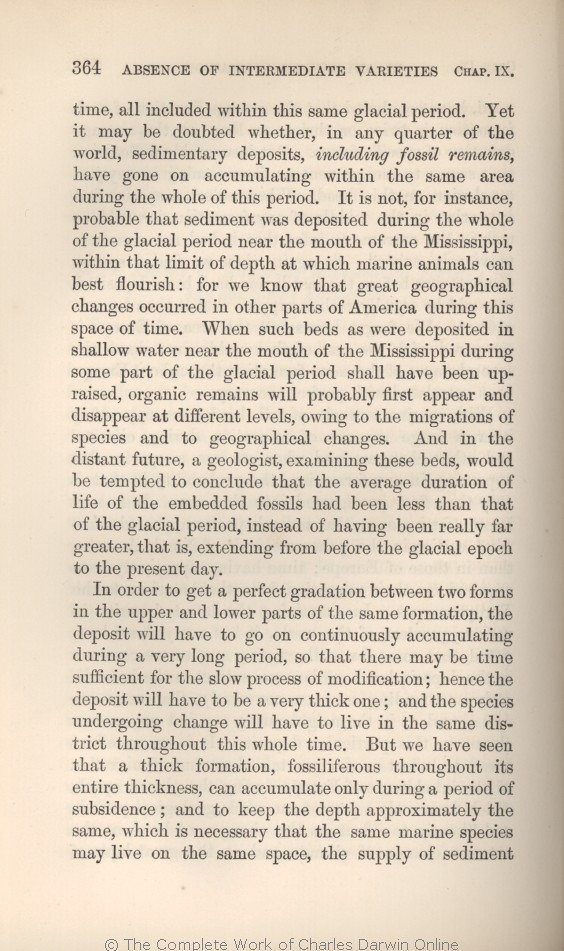of time, all included within this same glacial period. Yet it may be doubted
whether, | whether, 1866 1869 1872 | | whether 1859 1860 1861 |
|
including
1859 1860 1866 1869 1872 | | including 1861 |
|
fossil
1859 1860 1866 1869 1872 | | fossil 1861 |
|
remains,
1869 | |
remains
,
1859 1860 1866 1872 | | remains, 1861 |
| best flourish: 1869 1872 | | flourish; 1859 1860 1861 1866 |
| that 1869 1872 | | what 1859 1860 1861 1866 |
| great 1869 1872 | | vast 1859 1860 1861 1866 |
| migrations 1869 1872 | | migration 1859 1860 1861 1866 |
| geologist, 1866 1869 1872 | | geologist 1859 1860 1861 |
| would 1866 1869 1872 | | might 1859 1860 1861 |
| is, 1861 1866 1869 1872 | | is 1859 1860 |
|
|
In order to get a perfect gradation between two forms in the upper and lower parts of the same formation, the deposit
will | will 1866 1869 | | must 1859 1860 1861 1872 |
| to go on continuously accumulating during a very 1866 1869 |
| gone on accumulating for a very 1859 1860 1861 |
| gone on continuously accumulating during a 1872 |
| so that there may be time sufficient 1866 1869 |
| in order to have given sufficient time 1859 1860 |
| so that there may have been time sufficient 1861 |
| sufficient 1872 |
| modification; 1869 1872 | | variation; 1859 1860 1861 1866 |
| will have to 1866 1869 |
| will generally have to 1859 1860 1861 |
| must 1872 |
| undergoing 1859 1860 1861 1869 1872 | | under- going 1866 |
| change will have to live in 1869 |
| modification will have had to live on 1859 1860 1861 |
| modification will have to live in 1866 |
| change must have lived in 1872 |
| district 1866 1869 1872 | | area 1859 1860 1861 |
| this 1859 1860 1861 1866 1869 | | the 1872 |
| formation, 1866 1869 1872 |
| fossiliferous formation 1859 1860 |
| formation, fossiliferous throughout its thickness, 1861 |
| fossiliferous throughout its entire thickness, can accumulate only 1869 1872 |
| can only be accumulated 1859 1860 1861 |
| fossiliferous throughout its thickness, can accumulate only 1866 |
| that 1861 1866 1869 1872 |
| in order to enable 1859 1860 |
| marine species may 1866 1869 1872 |
| species to 1859 1860 |
| species may 1861 |
|









